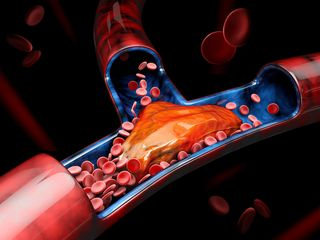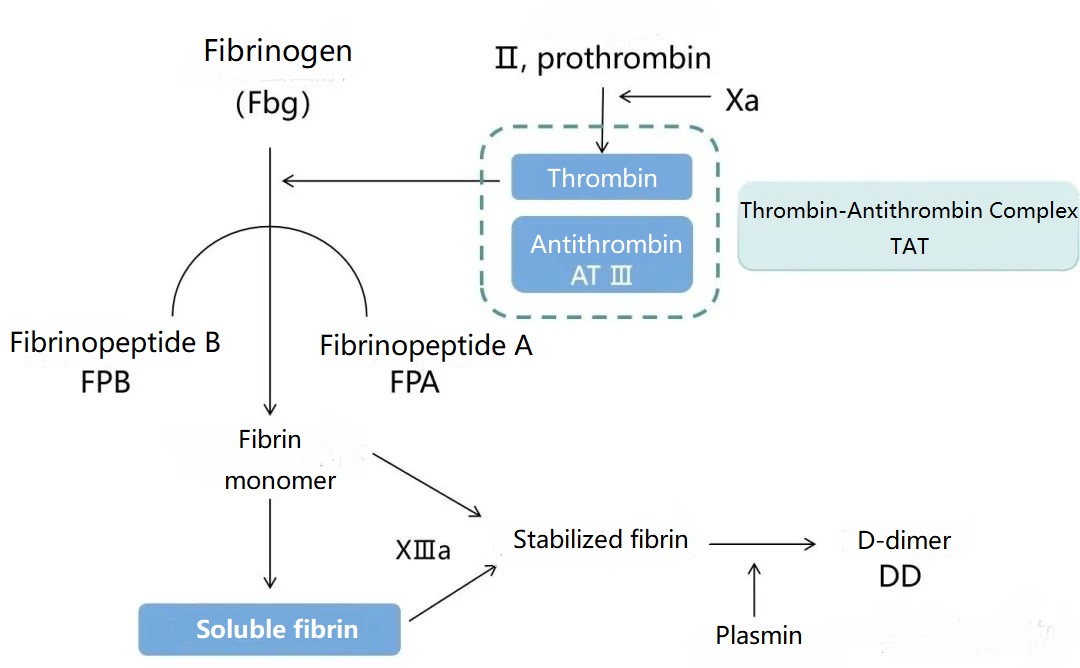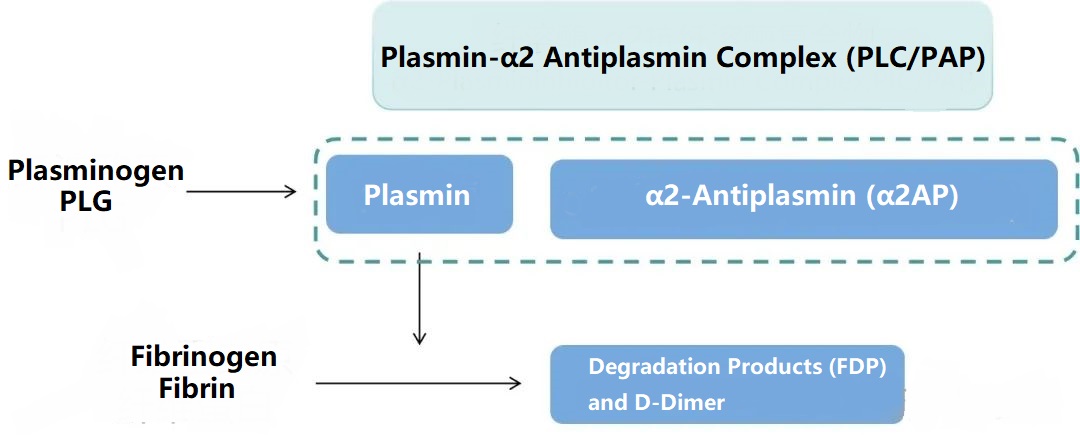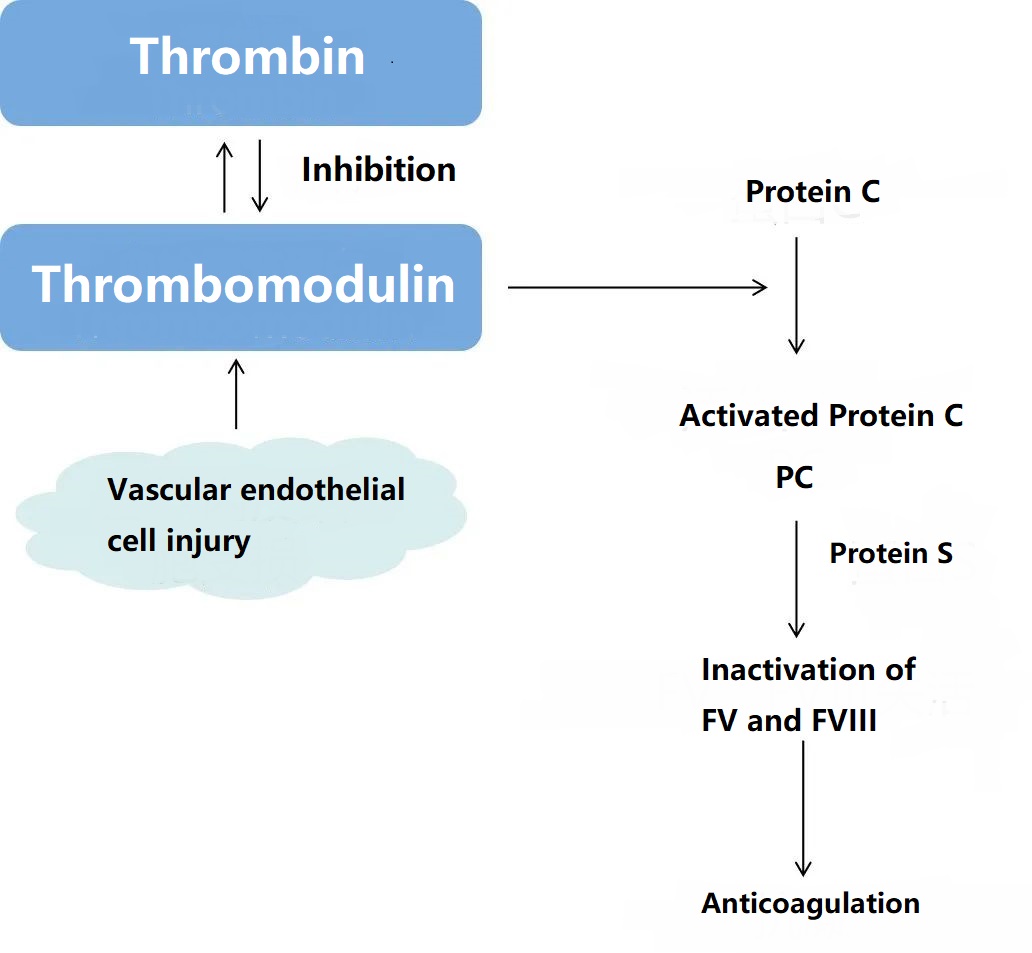Four Thrombus Indicators Aid in the Early Diagnosis of Thrombotic Diseases

The blood contains mutually antagonistic coagulation and anticoagulation (fibrinolytic) systems. When the coagulation system is overly active, fibrin and activated platelets combine to form thrombi (thrombosis), such as venous thrombi (e.g., deep vein thrombosis [DVT]), arterial thrombi (e.g., myocardial infarction, ischemic stroke), or pathological atrial thrombi. Thrombosis is the common pathological mechanism of the top three fatal cardiovascular diseases worldwide (myocardial infarction, stroke, and venous thromboembolism [VTE]), characterized by concealment, sudden onset, and high rates of mortality and disability.
TAT, PIC, TM, and tPAI·C are important markers reflecting the vascular endothelium, coagulation, and fibrinolytic systems before thrombus formation, collectively referred to as the "Thrombosis Four Items." Unlike earlier coagulation tests or D-dimer, which only detect post-thrombotic events, the Thrombosis Four Items better reflect the risk before clinical symptoms of thromboembolism appear, aiding in early diagnosis and prevention for patients with thrombotic diseases.

Figure 1: Thrombus Formation
TAT
Thrombin-Antithrombin Complex (TAT) is formed by the 1:1 binding of thrombin and antithrombin III (AT III), with a plasma half-life of 3–15 minutes. It reflects the amount of thrombin generated or the degree of coagulation system activation. AT III links to thrombin via an Arg-Ser peptide bond, and heparin can induce this reaction to achieve the optimal rate.
Elevated plasma TAT indicates a hypercoagulable state, heightened coagulation activity, and a risk of thrombus formation. Monitoring TAT levels dynamically helps detect early changes in the coagulation system and predict thrombus formation or recurrence. The clinical reference range for TAT is 0–4 ng/mL.

PIC/PAP
Plasmin-α2 Antiplasmin Complex (PIC/PAP) is a product of the interplay between fibrinolysis and antifibrinolysis, reflecting the generation of plasmin and fibrinolytic activity.
Plasmin (PL) is derived from plasminogen (PLG) activated by activators (e.g., t-PA, u-PA, UK, SK). During vascular injury, plasmin binds to fibrin, the main component of thrombi, degrading it to dissolve the thrombus and producing fibrin degradation products (FDP)—a process called fibrinolysis.
In acute thrombosis, the fibrinolytic system is activated. Activated plasmin has a half-life of only a few seconds and rapidly binds to fibrin, while free plasmin forms a stable 1:1 complex with α2-antiplasmin (α2AP), known as PIC. PIC has a plasma half-life of about 6 hours, independent of concentration, making it a reliable diagnostic marker for thrombosis. It aids in diagnosing disseminated intravascular coagulation (DIC) or other thrombotic diseases and monitoring thrombolytic therapy efficacy. The clinical reference range for PIC is 0–0.8 μg/mL.

TM
Thrombomodulin (TM) is a single-chain transmembrane glycoprotein expressed on vascular endothelial cells. TM binds thrombin and acts as a cofactor for activated protein C (PC), exerting anticoagulant and anti-inflammatory effects. When vascular endothelial cells are damaged, TM is released into the blood as soluble thrombomodulin (sTM), losing its primary physiological function. Elevated sTM levels indicate vascular endothelial injury, making it a biomarker for conditions such as DIC, renal impairment, and atherosclerosis. The clinical reference range for TM is 3.8–13.3 TU/mL.

tPAI·C
Tissue Plasminogen Activator Inhibitor Complex (tPAI·C) is formed by the 1:1 binding of tissue plasminogen activator (t-PA) and its inhibitor (PAI-1). t-PA activates plasminogen into plasmin, a key endogenous mechanism against thrombosis. PAI-1 inhibits fibrin degradation, promotes fibrin deposition in vessel walls, and stimulates smooth muscle cell proliferation.
tPAI·C correlates positively with vascular endothelial damage and is considered a biomarker for endothelial injury and fibrinolytic system activity. Reduced t-PA release may impair the body's defense against endogenous thrombosis. Upon injury, increased t-PA disrupts the balance of tPAI·C formation, leading to microthrombus expansion and eventual large-artery thrombosis. tPAI·C is one of the best diagnostic markers for venous thromboembolism (VTE) and aids in diagnosing venous thrombosis, myocardial infarction, assessing postoperative endothelial repair, and monitoring thrombolysis efficacy. The clinical reference range is <17 ng/mL for males and <10.5 ng/mL for females.
The coagulation and fibrinolytic systems are interconnected and work in tandem to maintain normal physiological functions. The laboratory now offers the Thrombosis Four Items (TAT, PIC, TM, and tPAI·C) for rapid quantitative detection via chemiluminescent immunoassay, enabling high-throughput, precise testing with minimal operational complexity. This facilitates early diagnosis, risk assessment, therapeutic evaluation for high-risk populations, and thrombosis screening in healthy individuals.
Product Information
| Gatalog Num | Product Name | Product Parameters | Price |
| S0B3242 | Thrombomodulin Recombinant Rabbit mAb (SDT-153-97) | Host : Rabbit | $515 |
| Conjugation : Unconjugated | |||
| S0B3241 | Thrombomodulin Recombinant Rabbit mAb (SDT-153-50) | Host : Rabbit | $515 |
| Conjugation : Unconjugated | |||
| S0B3075 | PAI-1 Recombinant Rabbit mAb (SDT-214-43) | Host : Rabbit | Inquiry |
| S0B3074 | PAI-1 Recombinant Rabbit mAb (SDT-214-31) | Host : Rabbit | $616 |
| S0B3076 | S-RMab® t-PA Recombinant Rabbit mAb (SDT-215-4) | Host : Rabbit | $616 |
| S0B3116 | Thrombin Recombinant Rabbit mAb (SDT-293-58) | Host : Rabbit | $515 |
| Conjugation : Unconjugated | |||
| S0B3115 | Thrombin Recombinant Rabbit mAb (SDT-293-4) | Host : Rabbit | $515 |
| Conjugation : Unconjugated | |||
| S0B3117 | Antithrombin III Recombinant Rabbit mAb (SDT-294-303) | Host : Rabbit | $515 |
| Conjugation : Unconjugated | |||
| S0B3114 | Thrombin Recombinant Rabbit mAb (SDT-293-14) | Host : Rabbit | $515 |
| Conjugation : Unconjugated | |||
| S0B3234 | Alpha 2-antiplasmin Recombinant Rabbit mAb (SDT-805-11) | Host : Rabbit | $515 |
| Conjugation : Unconjugated | |||
| S0B3231 | Plasminogen Recombinant Rabbit mAb (SDT-804-69) | Host : Rabbit | $515 |
| Conjugation : Unconjugated | |||
| S0B3233 | Alpha 2-antiplasmin Recombinant Rabbit mAb (SDT-805-8) | Host : Rabbit | $515 |
| Conjugation : Unconjugated |




